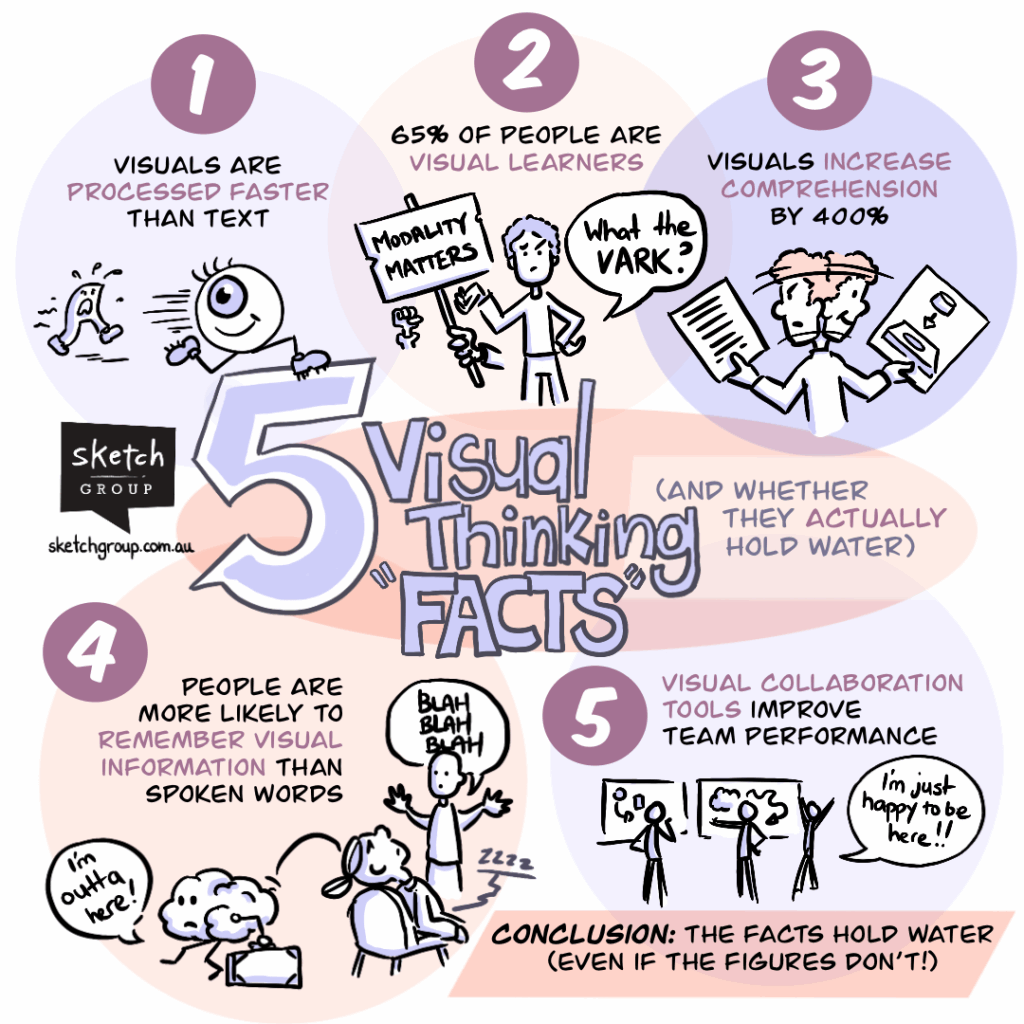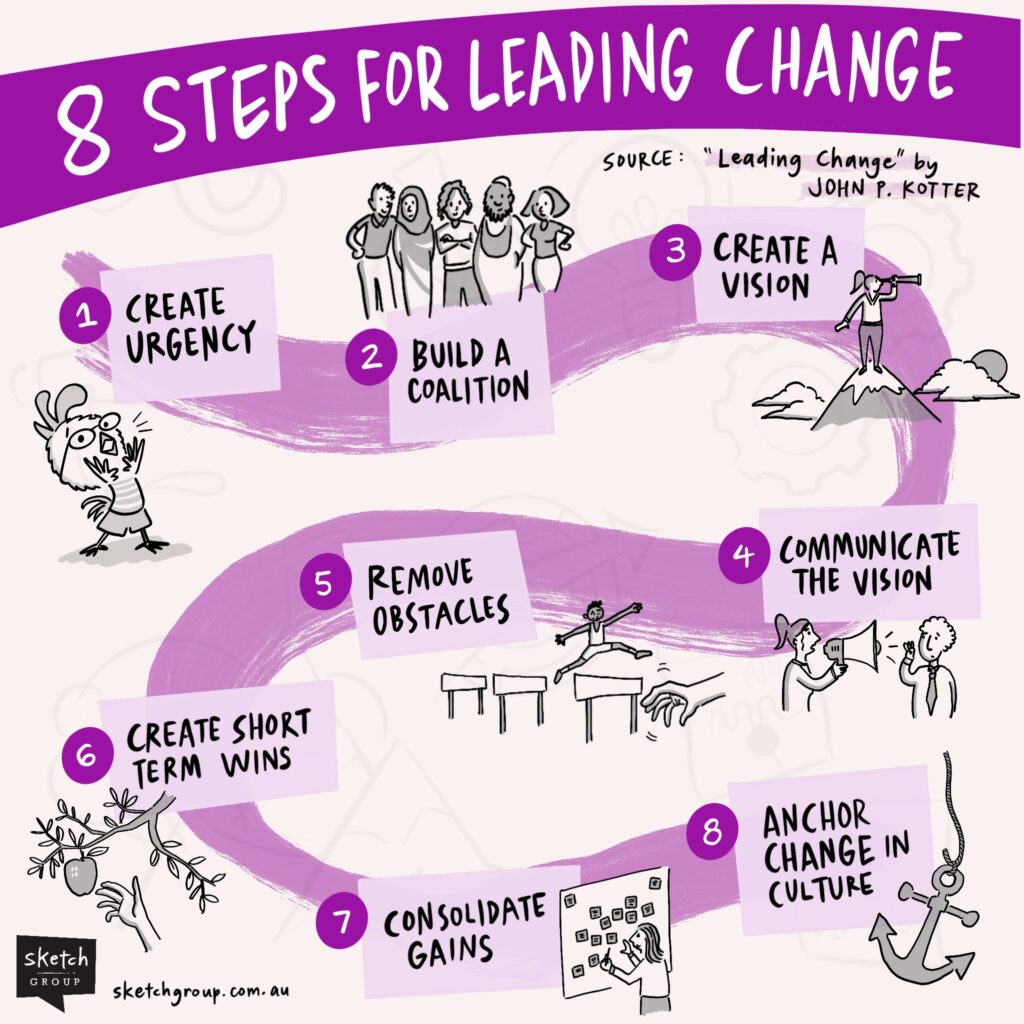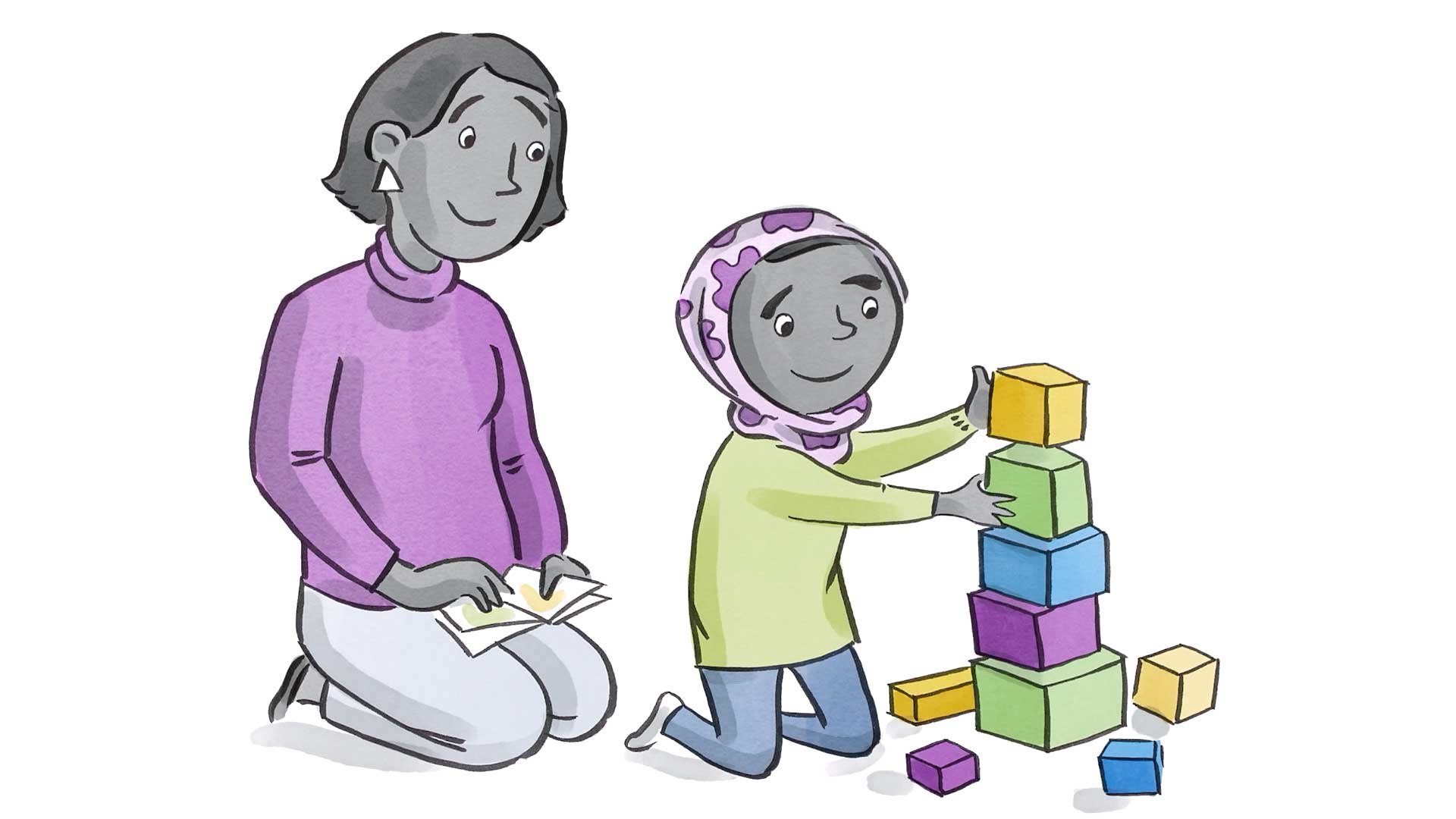Teaching isn’t just about delivering information—it’s about helping students truly understand and retain it. That’s where visual thinking tools come in. From videos and illustrations to posters and infographics, these tools help teachers present ideas more clearly, make learning more engaging, and support students with diverse learning needs. Whether you’re working in a primary school classroom, a high school, or a university setting, visual thinking tools can transform how you teach—and how your students learn.
What Are Visual Thinking Tools?
Visual thinking tools are methods and materials that use images, sketches, and diagrams to process and communicate information. These can be static, like classroom posters or concept maps, or dynamic, like sketch videos or real-time sketchnoting (aka live sketching or graphic recording).
Common examples include:
- Explainer videos
- Sketchnotes or visual summaries
- Infographics for data and concepts
- Illustrated posters and diagrams
- Facilitated visual workshops and mind maps
These tools help bridge the gap between complex information and student understanding—making content more accessible, memorable, and enjoyable.
Why Use Visual Learning Tools in Education?
1. Improve Comprehension
Idea-mapping tools break down complex topics into digestible visual components. A concept that’s difficult to grasp in text can be instantly clearer through a diagram or illustrated video.
2. Boost Engagement
Students pay more attention to content that feels dynamic and visual. Tools like hand-drawn explainer videos or colourful concept maps grab attention and make lessons more interactive.
3. Support Diverse Learners
Visual facilitation tools are especially useful for students with different learning needs—including those with ADHD, autism, or EAL (English as an Additional Language). Visuals provide structure, clarity, and alternative ways to absorb information.
4. Enhance Retention
Studies show that visuals improve long-term memory. When students see information presented visually, they’re more likely to recall it during assignments, exams, or real-world applications.

Examples of Visual Thinking Tools in Action
1. Explainer Videos for Curriculum or Onboarding
Animated videos can walk students through new concepts, explain processes, or introduce programs and services. They’re especially helpful for online learning modules.
2. Sketchnotes and Visual Summaries
Capture the key points of a lecture, student presentation, or guest talk in a sketchnote. These quick-draw visual summaries are great for revision and sharing.

3. Posters and Infographics
Use custom visuals to reinforce classroom routines, wellbeing programs, science cycles, historical timelines, or mathematical formulas. They’re eye-catching and informative.
4. Visual Workshops and Facilitation
Incorporate drawing and mapping activities into group work or teacher professional development. Sketching ideas helps students (and educators) think more creatively and solve problems visually.

Where Visual Aids Fit in Education
Visual thinking tools are incredibly flexible. Here’s where they’re commonly used:
- Primary and secondary classrooms – for curriculum content, behaviour reminders, or school values
- Tertiary education – to summarise research, explain administrative processes, or promote support services
- Professional development – to visualise learning outcomes, workshop insights, or organisational goals
- Parent communications – for visually explaining policies, reports, or events
Bringing Visual Thinking to Your Classroom
Visual thinking isn’t just for students. Sketch Group also delivers visual thinking training for groups, helping professionals and teams working in various industries, communicate ideas more clearly and creatively.

Getting Started with Visual Communication Tools
You don’t need to be a professional illustrator to use visual thinking in the classroom. Even simple sketches on a whiteboard can be powerful. And for larger projects, partnering with a visual communications team can take your ideas to the next level. Visual thinking tools are more than just a creative boost—they’re a practical, proven way to enhance teaching and learning. By tapping into how different students naturally understand the world, these tools help you teach with clarity, empathy, and impact.
At Sketch Group, we help schools and those in the education industry turn ideas into visuals that inform, engage, and inspire. If you’d love to find out more about how you can use visual thinking tools in your classroom or institution, contact us today – we’d love to chat!

